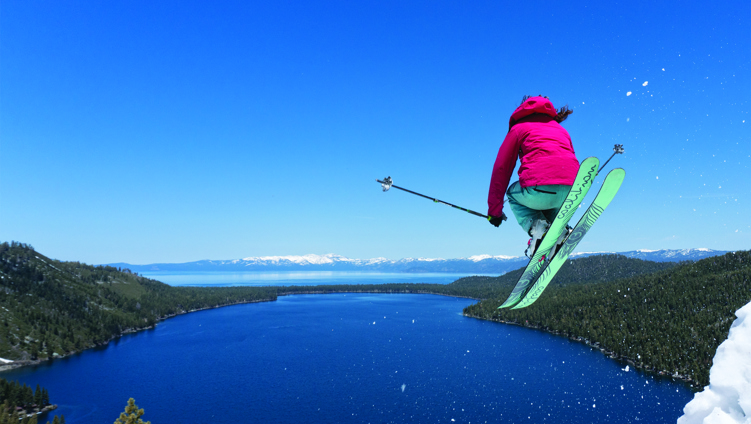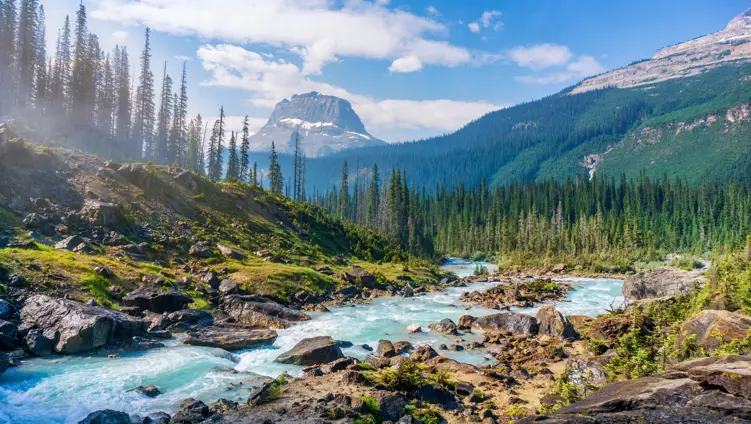In Vancouver, urban creeks once declared dead are rewelcoming spawning salmon for the first time in decades. Key to this minor miracle are groups of outdoor-loving volunteers. Meet the streamkeepers.

In Vancouver, urban creeks once declared dead are rewelcoming spawning salmon for the first time in decades. Key to this minor miracle are groups of outdoor-loving volunteers. Meet the streamkeepers.
There are over 90 creeks in Burnaby, a small city on the eastern fringes of Vancouver. Stoney Creek is one, trickling into life in a leafy neighbourhood in the southeastern foothills of Burnaby Mountain, a forested dome just large enough to earn its name. From here Stoney Creek babbles south, winding a shaded course between private gardens and Stoney Creek Community School until it joins the Brunette River.
The Brunette flows further south through a more industrialised cityscape - workshops, yards, railway lines and an Amazon fulfilment centre - to join the hulking Fraser River for the final 20km of its 1,375km journey from the Rocky Mountains. This last stretch passes sprawling industrial estates, golf courses, residential mazes and arable enclaves before spilling into the Georgia Strait at its endangered estuary of mudflats, salt marshes and dwindling wildlife.
In the 1950s the Brunette, along with tributaries including Stoney Creek, was pronounced dead to the salmon that once returned in droves to their spawning grounds. This journey, already one of nature’s most remarkable reproductive feats, had been polluted into impossibility by the culverts, chemicals, refuse and other impositions of Burnaby’s development.
'In the 1950s the Brunette, along with tributaries including Stoney Creek, was pronounced dead to the salmon that once returned in droves to their spawning grounds.'
This development has taken place on the unceded homelands of Indigenous Central Coast Salish Nations, supported in no small part by burgeoning salmon populations. In the 1850s a colonising influx of gold prospectors, loggers, military personnel and other settlers privileged with pre-emption rights (the right to claim land by clearing it - a right denied to Indigenous people) initiated a transformation that saw Burnaby grow to 100,000 people by 1960 and around 250,000 today.
Salmon stocks in British Columbia are on the brink of collapse, with habitat degradation a leading cause alongside overfishing and climate change. But in recent years this bleak trend has, at least in Stoney Creek, taken a hopeful turn. Because in 2004 salmon returned to Stoney Creek for the first time in decades. Seventeen years later, in 2020, 1499 returning chum, coho and pink salmon were recorded there. A crucial cog in this success is a group of local volunteers passionate about Burnaby’s waterways: the streamkeepers.
The waterways of Burnaby, with Stoney Creek marked in red.

The Stoney Creek streamkeepers are headquartered in a small outbuilding on the grounds of Stoney Creek Community School, a stone’s throw from Stoney Creek. This is the Jennifer Atchison Environmental Centre, named after the founding streamkeeper of what has evolved into the Stoney Creek Environmental Committee (SCEC). In the 1990s, concerned about the health of Stoney Creek, Jennifer saw that stakeholders with influence over the creek - including Burnaby and Coquitlam city councils, BC Hydro, Simon Fraser University and the Department of Fisheries and Oceans - weren’t communicating properly. She convened a meeting and the SCEC was born, along with a wider Stoney Creek Working Group.
Jennifer lost her fight with cancer in 2010, and is spoken of in revered tones. Alan James, Director of the SCEC, remembers her as a powerful and passionate activist as we chat inside the Centre. Later, when I speak with SCEC President (and Jennifer’s successor) John Templeton, he concurs. “I've always described to other people that we're all Jennifer's disciples!” he chuckles.
If streamkeeping is the act of preserving and enhancing waterways, in practice the SCEC’s streamkeeping work falls into two categories: fieldwork and politics. The fieldwork is captured in a beautiful image: concerned, gently adventurous local people walking or wading the creekbed in the name of citizen science: measuring water quality, mapping stream features, clearing obstacles and cleaning pollutants, installing signage and protective fencing, removing invasive species to foster healthy riparian vegetation and recording salmon species and numbers.
These activities are crucial if Stoney Creek and other streams are to support salmon. Urban development holds myriad dangers. Litter and waste can clog creeks; concrete increases poisoning run-off potential for road salt, oil and industrial toxins; culverts and other infrastructure projects can block salmons’ passage. Streamkeeping fieldwork helps identify, understand and address these problems through action and data.
'The fieldwork is captured in a beautiful image: concerned, gently adventurous local people walking or wading the creekbed in the name of citizen science: measuring water quality, mapping stream features, clearing obstacles and cleaning pollutants, installing signage and protective fencing, removing invasive species to foster healthy riparian vegetation and recording salmon species and numbers.'
This is where politics comes in. Based on its expertise, the SCEC advocates, agitates and advises - partly through its place on the Stoney Creek Working Group, but also through informal networks. As a grassroots organisation with minimal funding, advocacy isn’t easy - a frustration John knows only too well. His job is to “keep everyone playing in the same sandbox,” he says - “not easy, because as you can imagine with people who have an interest in the watershed, they all may have different views politically.”
This long-term relationship building is difficult but essential. “Often I find myself having to bite my tongue!” John says wryly. Progress can be slow - something liable to frustrate newer members. In one instance it took five years to replace a culvert impeding the creek. “I've learned that patience is something that you have to have in this business,” he continues. Where some might “scream and almost make an enemy” when other organisations work slowly or against the interests of the SCEC, John prefers a pragmatic approach. “If you make an enemy, people don't want to help,” he says. This seems to be working. The SCEC is now routinely consulted on projects and changes.
This is a story, then, of collective commitment as much as local heroes. But the local heroes are real. At the Centre Alan tells me about Elmer Rudolf, another local streamkeeping pioneer who could sometimes be found knee-deep in the Brunette throwing salmon upstream before the construction of a necessary fish ladder. John references Elmer too. “Emler Rudolph said, ‘We're going to try and bring these fish back.’ And people laughed at him. They said, ‘You’re crazy, it can’t be done.’ They went out and they proved everyone wrong.” Like Jennifer, Elmer was awarded a National Recreational Fisheries Award, and both received respective awards designating them as local heroes.
'Emler Rudolph said, "We're going to try and bring these fish back." And people laughed at him. They said, "You’re crazy, it can’t be done." They went out and they proved everyone wrong.'
Streamkeeping is a fantastic example of how adventurous citizen science can catalyse meaningful change. Returning salmon brings many benefits to waterways. They support over 137 species, including bears and orcas, which in consuming salmon then distribute marine nutrition throughout local ecosystems. This nutrition, in turn, supports faster and richer growth of riparian vegetation that protects creeks and supports life.
Humans benefit too. Salmon play a foundational role in Indigenous cultures across Canada in particular, and many local people in general derive joy from witnessing salmon, participating in the SCEC’s Great Salmon Send Off and savouring the ecosystem enhancements salmon bring. Successfully protecting waterways also helps cultivate environmental awareness and stewardship.
When we consider how this stewardship might spillover beyond streamkeeping activities, the wider value of streamkeeping and other grassroots environmental activism comes into view. Indeed, Vancouver is speckled with streamkeeping groups: a constellation of ordinary, outdoor-loving people who want healthy ecosystems. There is little formal coordination, but piecemeal cooperation occurs.
Urban Salmon: a documentary by Fernando Lessa about the return of salmon to Vancouver's waterways.
John explains that some groups are better equipped than others. He references the West Vancouver group. “The demographic is mostly older, very well educated, a lot of money. Business people know a lot of people, so as a result their streamkeepers group is very progressive. Everyone on the West Vancouver City Council is a member.” On the other hand, Alan tells me, Silver Creek’s group would be more accurately described as a person. Ed Von Euw is its only streamkeeper.
Herein lies the problem for streamkeeping groups: sustainability - protecting progress in the face of continuing development. Minimal funding is one issue. But replenishing the streamkeepers is a more pressing concern. Most streamkeepers are older. Alan is retired and John will retire next year, for example. Recruiting younger members is a challenge, especially without existing young members to relate and connect through digital tools. “Younger people are sometimes working two jobs just to survive, to live here, because it's so expensive,” says John. “They have young children, and they don't have the time to volunteer.”
Covid has proven a double-edged sword here. While it has placed greater strain on Stoney Creek as more people have been confined to local areas, this activity has increased interest in the SCEC. “If you live in a condo building, and you're not getting out, you need that trail,” says John. “You need the creek for your heart, your soul, your body.” My visit coincided with a graduate student enquiring about volunteering. Relatively new to the area, during Covid he has been exploring Stoney Creek looking for wildlife. This led him to the SCEC as a prospective streamkeeper.
'If you live in a condo building, and you're not getting out, you need that trail,. You need the creek for your heart, your soul, your body.'
These problems aren’t unique to the SCEC. Indeed, many grassroots environmental organisations will find it even more difficult to recruit in the absence of relatively high-profile success (I learned about the SCEC through a film called The Return at the Vancouver International Mountain Film Festival). As people who love adventure and the environments that support it, we have a duty to ask what role we might play, however minimal, in helping protect these environments. Where do environmental efforts converge with our own adventures?
The trailer for The Return, a film by Marina Dodis about the return of salmon to Vancouver's waterways.
John can relate to this link, as a keen outdoorsman and fisherman lucky enough to grow up outside and by the water. “It’s something because you have passion, because you care in your heart,” he says. “I do it because the fish don't have a voice. So I'm the voice.” As the remarkable success of Vancouver’s streamkeepers shows, this passion can drive change. A combination of plucky activism and collective contribution can bring environments, even those in the bowels of the city, back from the dead.

